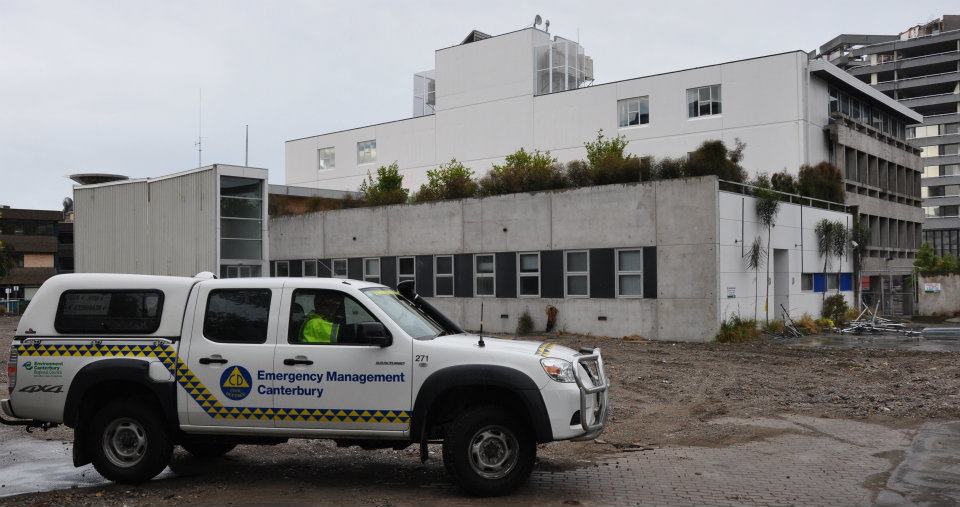Risk Readiness & Resilience
| Site: | NetworkEd |
| Course: | Introduction to Emergency Management |
| Book: | Risk Readiness & Resilience |
| Printed by: | Guest user |
| Date: | Friday, 2 January 2026, 4:14 PM |
Description

Risk Readiness & Resilience
1. Community Resilience
Welcome to Module 2: Risk Readiness and Resilience
In the previous module, you explored the concept of risk and emergency management. As a result, you should have a better understanding of the role that legislation plays in emergency management, some of the effects that emergency management has had on real life examples of emergencies and the effects that emergencies have on on how we manage emergencies now.
This module builds on those concepts by taking a look at the role that community resilience plays in hazard response and management. We will also give you opportunities to explore some more real life examples of hazards and provide you with the resources to begin planning to manage hazards and reducing the effects they could have on the community.
To start with, watch the video below (7:43mins) where Jon introduces you to community resilience before completing the activity on the next page.

Reminder: When you have pressed play on this and any other video in the course, you can click on the 'fullscreen'  icon in the bottom right of the video to expand the screen to fit the device you are using. This is especially helpful if you are on a mobile device!
icon in the bottom right of the video to expand the screen to fit the device you are using. This is especially helpful if you are on a mobile device!
1.1. Topic 1, Activity 1

Answer the following question. Although the activities in this course are not mandatory, they will prepare you to complete the certificate of achievement exam, if you elect to challenge it at the end of the course.
1.2. Additional Resources

For a more detailed discussion of disaster resilience, go to the article below:
- Disaster Resilience: An Integrated Approach edited by Douglas Paton, David Johnston. 2006

Canterbury Regional Emergency Coordination Centre was abandoned due to quake damage during the February 2011 Christchurch earthquake.
Photo: Jon Mitchell
2. Community Resilience Indicators
Now that we explored the concept of community resilience, how do you know if a community is resilient? In this topic, we will explore indicators of community resilience to help answer that question.
Watch the video below (5:14mins) which should help prepare you to understand the indicators of community resilience and their importance in emergency management before completing the activity on the next page.
2.1. Topic 2, Activity 1

Answer the following question. Although the activities in this course are not mandatory, they will prepare you to complete the certificate of achievement exam, if you elect to challenge it at the end of the course.
2.2. Additional Resources

If you want to learn more about community indicators of resilience, please go to the article below:
What gets measured gets done: The New Zealand Resilience Index. Resilience to Nature's Challenges.3. Building Resilience in Communities
From an understanding of community resilience indicators, let's now move on to discuss the reality of building community resilience.
Watch the video below (7:19mins) to try to get a better understanding of how to build community resilience before completing the activity on the next page.
3.1. Topic 3, Activity 1

Answer the following question. Although the activities in this course are not mandatory, they will prepare you to complete the certificate of achievement exam, if you elect to challenge it at the end of the course.
3.2. Additional Resources

To access a great set of resources on community resilience follow the link below:
4. Organisational Resilience
So far, we have looked at community resilience, the indicators of resilience and how to build resilience in communities. But, communities are not the only things that need resilience. Organisational resilience is also important in managing emergencies.
Watch the video below (4:20mins) which should give you a general understanding of organisational resilience before completing the activity on the next page.
4.1. Topic 4, Activity 1

Answer the following question. Although the activities in this course are not mandatory, they will prepare you to complete the certificate of achievement exam, if you elect to challenge it at the end of the course.
4.2. Additional Resources

If you are really interested in the topic of organisational resilience, and want to have a look at a well put together piece of research, check this out:
5. Small Business Resilience
Now that we have looked at community and organisational resilience, let's take a look at organisational resilience through using a real life case study.
Watch the video below (6:53mins) that exemplifies the real life scenario of the Canterbury earthquakes and the ability of organisations to be resilient during emergencies before completing the activity on the next page.
5.1. Topic 5, Activity 1

Answer the following question. Although the activities in this course are not mandatory, they will prepare you to complete the certificate of achievement exam, if you elect to challenge it at the end of the course.
5.2. Additional Resources

Guidance on small business resilience can be found at the link below:
For more on motivations to community disaster preparation check out this article:Framing effects on disaster preparation: Is negative framing more effective?
6. Understanding Risk
Recall in module 1 when we talked about risk and how to analyse it? Well, now we get deeper into the concepts and processes of reaching and sharing understandings of risk.
Watch the video below (2:58mins) which should help you get a better understanding of how understanding risk is a vital part of managing emergencies before completing the activity on the next page.
6.1. Topic 6, Activity 1

Answer the following question. Although the activities in this course are not mandatory, they will prepare you to complete the certificate of achievement exam, if you elect to challenge it at the end of the course.
6.2. Additional Resources

To explore this subject in more detail you should go to this article:
7. Climate Change
Some of the most crucial, and at times contentious, hazards we face while managing emergencies is the context of understanding, mitigating, preparing for, and responding to Climate Change.
Watch the video below (6:33mins) where Jon talks about a changing climate for risk before completing the activity on the next page.
7.1. Topic 7, Activity 1

Answer the following question. Although the activities in this course are not mandatory, they will prepare you to complete the certificate of achievement exam, if you elect to challenge it at the end of the course.
7.2. Additional Resources

This report from the National Institute of Water and Atmospherics outlines the expected impacts of climate in New Zealand.
8. Reducing Risk Through Planning
Have you ever wondered what the opportunities for enhanced land use planning in the management of risk are?
Watch the video below (6:41 mins) which should help you begin to understand the relationship between planning for risks and risk reduction before completing the activity on the next page.
8.1. Topic 8, Activity 1

Answer the following question. Although the activities in this course are not mandatory, they will prepare you to complete the certificate of achievement exam, if you elect to challenge it at the end of the course.
8.2. Additional Resources

If you are interested in learning more about reducing risk through planning, this article may be of value to you:
- Glavovic, Becker, and Saunders. 2010. Realising the potential of land-use planning to reduce hazard risks in New Zealand. The Australasian Journal of Disaster and Trauma Studies ISSN: 1174-4707 Volume: 2010-1
9. Physical Risk Reduction
We have talked about risk, how to communicate risks, and reducing risks (amongst other things), This topic explores the context, opportunities, and limitations of the physical approach to managing risks from relevant hazards.
Watch the video below (6:04 mins) to help you understand the importance of physical risk reduction before completing the activity on the next page.
9.1. Topic 9, Activity 1

Answer the following question. Although the activities in this course are not mandatory, they will prepare you to complete the certificate of achievement exam, if you elect to challenge it at the end of the course.
9.2. Additional Resources

For more detailed discussion of the opportunities and limitations of physical risk reduction, please have a look at these documents:
- Disaster Risk Reduction and Disaster Risk ManagementDisaster Risk Reduction and Disaster Risk Management - United Nations Disaster Risk Reduction
- National Disaster Risk Reduction Framework - Australia
10. End of Module 2
Congratulations!

You should have received a Module 2 completion badge. Great work!
You should now have access to Module 3: Risk Response Management, Collaboration, & Coordination
**Note: If for some reason you are not able to access Module 3, make sure that you have viewed each page in this book.

In addition to being able to access the next module, you will also see the list of discussion forums found within this topic so that you can easily access them throughout the course if you want to.